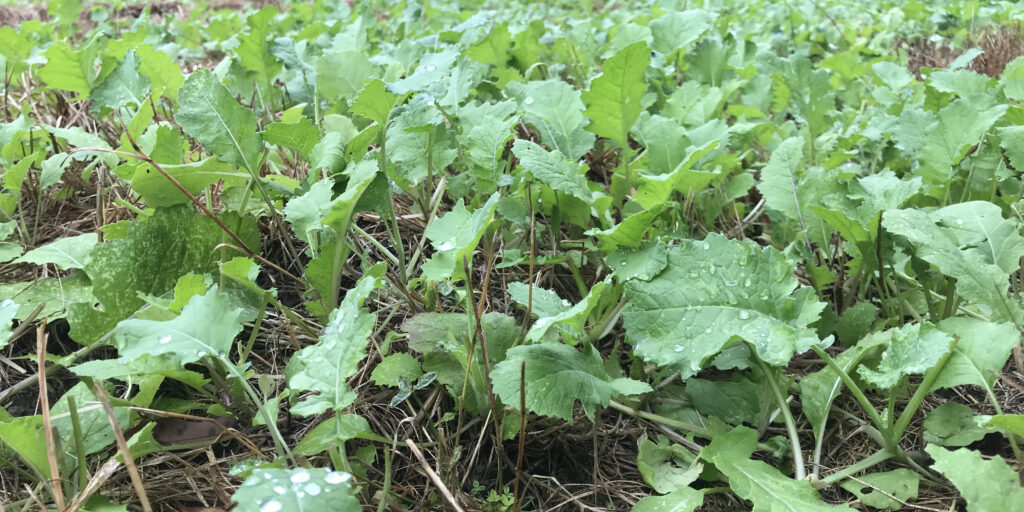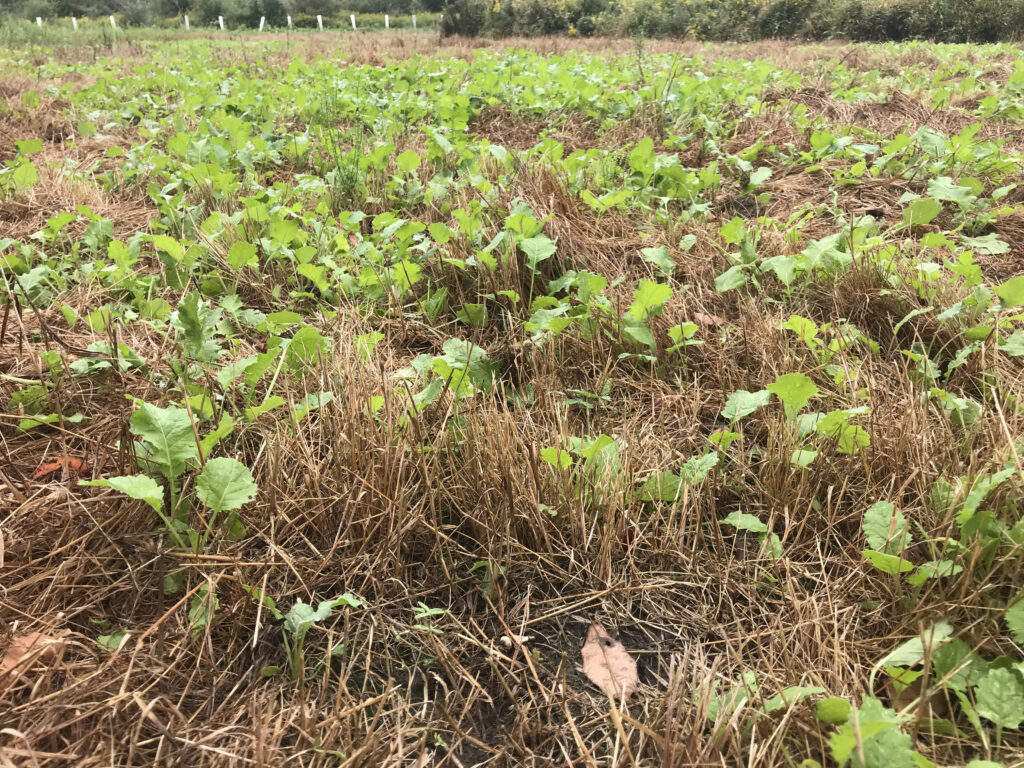
Food plotting for the first time can be intimidating. I always thought I needed all this large and costly
equipment to plant a food plot. My Grandpa, my Dad nor I, have ever owned a John Deere tractor, a
nice rototiller to turn the ground up, or a large drop spreader to spread fertilizer and lime. The first food
plot I ever planted was with hand tools I found in the garage and sweat equity. Years later, I now own
an ATV with some pull-behind implements, but you don’t even need that to plant a successful food plot
on your hunting ground. In this article, I am going to tell you the easiest & cheapest way to plant your
own Fall food plot. It can be done using minimal equipment while also considering the health of your
soil. We will also cover when and where to place this highly attractive wildlife buffet, so you can enjoy
the fruits of your labor this season, without over-pressuring your Whitetails.
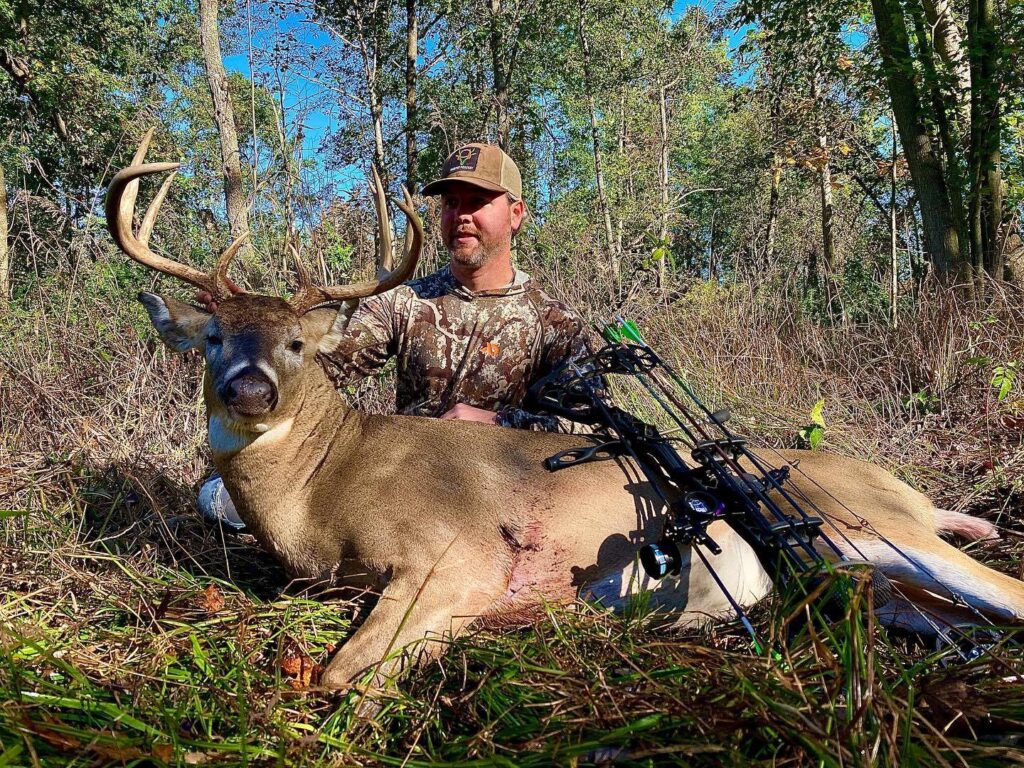
Often when a hunter or habitat manager wants to plant their first food plot, they find an original
opening in the brush or the woods. This is common because it’s the easiest place to start. Why would
you want to cut down a bunch of trees when there is a clearing down by the creek? Sometimes this
works but can backfire quickly if a couple of things aren’t considered.
The first thing to think about, that so many people overlook, is food plot location. Why is location
important? The location of the food plot itself isn’t truly the important part. The imperative part is the
access you take to the tree stand near the food plot, or in other words, how you enter and exit the plot
when hunting. Deer, for the most part, are tolerant to a little bit of human pressure. I mean a “little”.
The less our deer herd knows we are on the property, the better. Minimizing human intrusion is first
priority on my ground. So, if my brand-new food plot is in a setting on my land, where to get to it, I must
walk past bedding areas, thickets, or anywhere deer frequent, this is counterintuitive. Even if you do
this right, and deer don’t see you the day you hunted, they will still smell your boot tracks after dark,
that night or the next. Leaving human scent in “their area” is an obvious no-no, so let’s plan to avoid it
at all costs. Let’s focus on placing your stand or blind in a safe-to-get-to area and bringing the deer to you.
We can do this with an easy, attractive food plot while maintaining low human intrusion. I stress
location first because this is one of the most common mistakes I see in client Land Plan consultations.
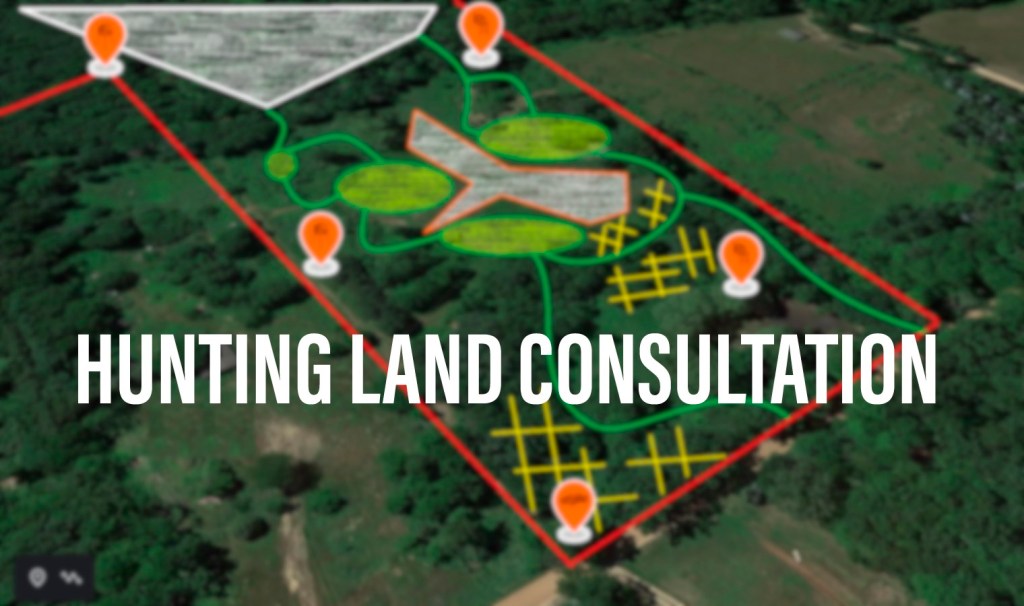
After the location is thoughtfully considered and picked out, it’s time to celebrate! One of the hard
parts is over, but we are not out of the woods yet. Next on the list is making sure we have the #1
ingredient at hand: sunlight. The way I determine this is simple. I stand in the center of the new food
plot and look up. If there are any branches in between the sky and me, then the trees need to go. A
closed canopy will give you poor results in a hurry due to lack of sunlight. Inside corners of agricultural
fields or old pastures are great places to start due to ample sunlight already being available.
Now that a location and sunlight have been discussed, let’s get to food plotting. I call this planting
technique the spray & pray broadcasting method. To plant this easy do-it-yourself plot, you will need
the following.
1) Backpack sprayer w/Roundup
2) Seed broadcast spreader
3) Rain
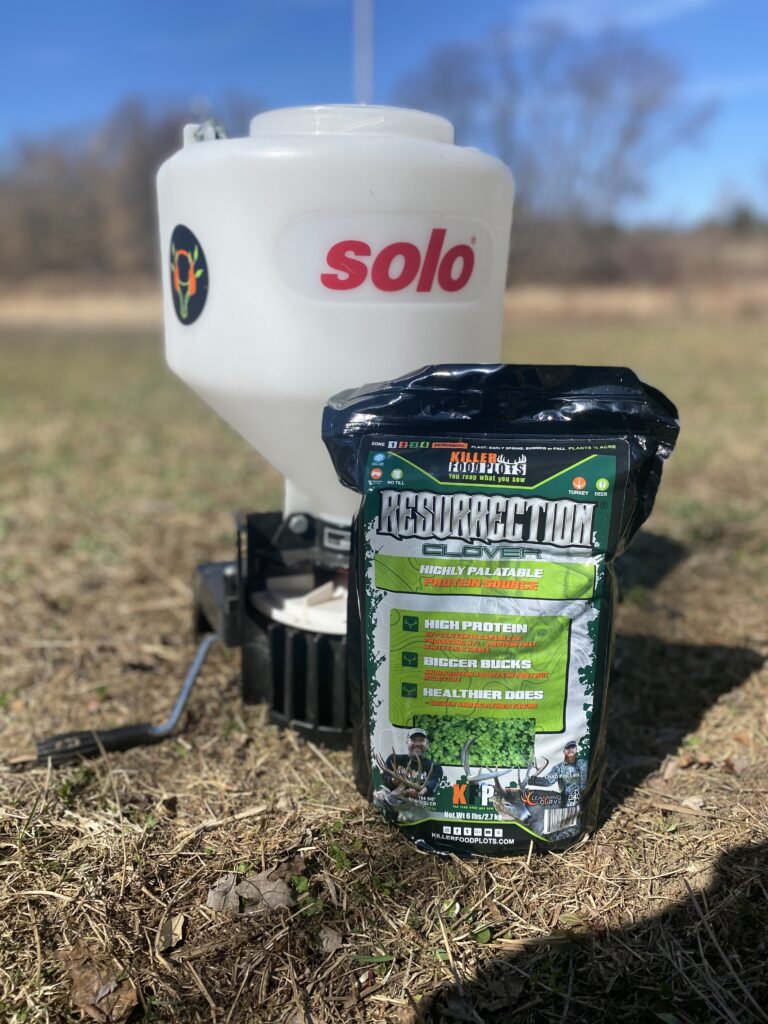
Yes, that is all. The backpack sprayer is filled with water and a proper dose of a non-selective herbicide
called Glyphosate, or commonly known as Roundup. Be sure to read the label carefully. This is going to
terminate the current plant growth in your new food plot area and get you ready to plant. There are
two reasons for spraying glyphosate. The first reason is the get rid of any of the plant competition that
will be competing with your new seedlings. If you don’t terminate the existing vegetation, your new
plants won’t stand a chance against grasses or broadleaves competing and shading them out. The 2 nd
reason is to create a thatch layer on the ground. People commonly refer to the dead and dying plant
matter from our herbicide treatment, like thatch, or a mulch layer. This is another key ingredient in our
recipe. You can mow or weed whip down the new plot area prior to spraying if the vegetation is 6’ tall,
but 2-3’ of dead plant matter is perfect to start with. This thatch layer is going to be how we bury our
seeds. As the existing vegetation dies, it will slowly fall to the ground and form our thatch. You may be
wondering when should you spray the glyphosate? For Fall food plots, I tend to spray once in mid-July
and follow up with a second glyphosate application a few weeks later. You could spray earlier in the
year as well to control the height of your thatch. Either way, this 2-part spraying will give you a
competition-free seedbed for planting.

The next thing I want to cover is seed. The types of seeds that work best for this application are small-sized seeds like clover, brassicas & grains. Since those seed types don’t require a deep planting depth,
they work perfectly for this spray & broadcast or spray & pray food plot. I like using an annual and
perennial mix of clover, so you have some great Spring germination as well. I also like to add some
brassicas and rye grain to my planting. This creates a diverse mix which deer prefer and soil loves. My
supplier of choice is Killer Food Plots in Muskegon, MI. They are local, full of knowledge and have very
high-quality seed and can also walk you through planting. No matter who your seed supplier is be
sure to specify that you are using the spray and broadcast method to plant. This method requires an
increased seeding rate vs conventional planting or no-till drilling. Do not skip culti-packing with a Packer Maxx! After a few weeks, you should see some growth. If you have any bare spots, I would recommend a follow-up broadcasting, also called overseeding, of winter wheat and rye grain, at 50lbs per acre. This 2nd broadcasting of grains will fill in
any blank spots you have and provide some additional young tender plants that your deer prefer.
The last step is a very important step, which is to broadcast the seed just before a heavy rain. Seed
broadcasters range from inexpensive small green handheld units from the home improvement stores to
spreaders you can strap to your chest and hold more seed. Either way, find what works for you. I am
partial to the Solo plastic chest-mount spreaders, but Earthway makes a nice bag spreader too. The part
we don’t want to miss about this step is the heavy rain. I like to plant between Mid-August and Labor
Day weekend. If you see a good heavy rain in the forecast, this is where the praying comes in. Pray that
the forecast holds true, and be sure to get out there and spread your seed the day before or even hours
before the rain. This heavy rain event is going to plant our seed for us. It will wash the newly
broadcasted seed down through the thatch layer, and onto the soil. Once the seed reaches the soil and
forms the seed to soil contact we are looking for, we are set. The previously mentioned thatch layer,
now on top of our seed, acts as if we buried the seed in the dirt. This thatch layer will protect the seeds
& young seedlings from predation & the hot summer sun while retaining moisture in our soil for them
to grow.
One additional step I would recommend is to perform a soil test. You can find soil tests, or places that
can help you with soil testing, online. Studying the test results and using the recommended amounts of
soil amendments and fertilizer can really improve the growth you see in your planting.
In summary, you can have your own food plot this Fall with a couple of small pieces of equipment, and
without the big costly tractor. There is usually more than one way to skin the cat, and the spray & pray
broadcast method is something worth trying. Mother Nature doesn’t always play along, but I promise
you will learn something new each time you venture out to become a better habitat manager. A little
time, luck, and sweat equity could put your target buck in front of your stand this October.
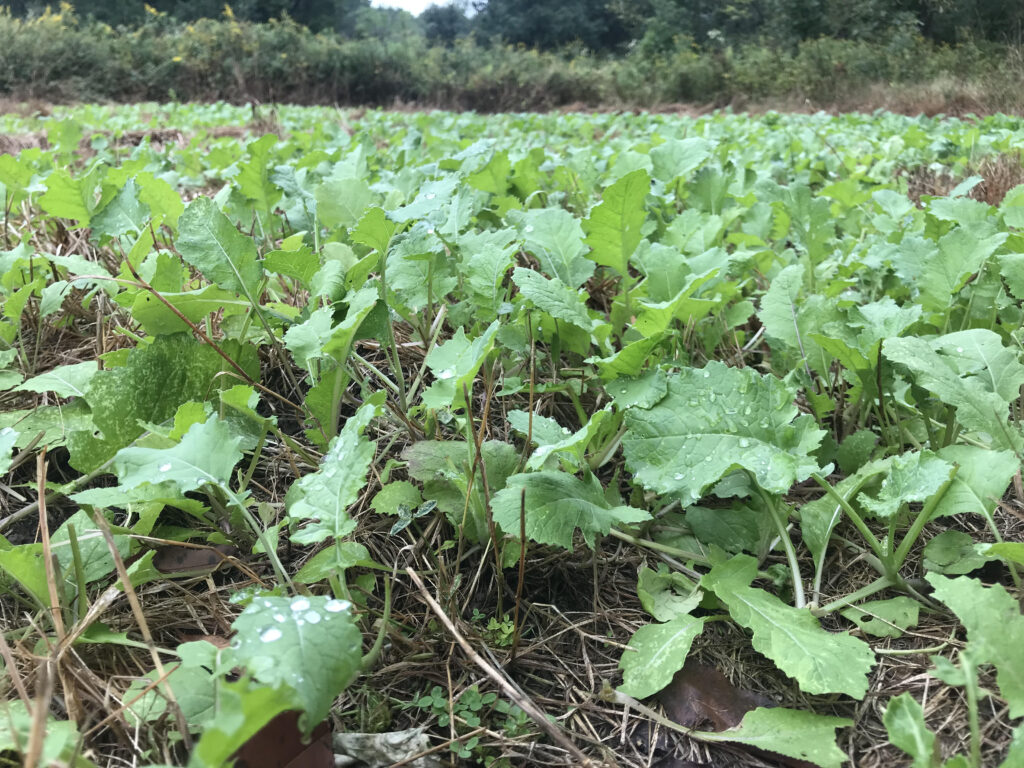
- Jared Van Hees (Host – Habitat Podcast)

